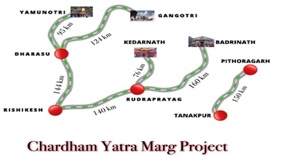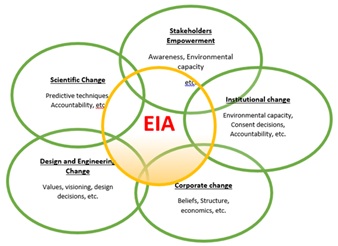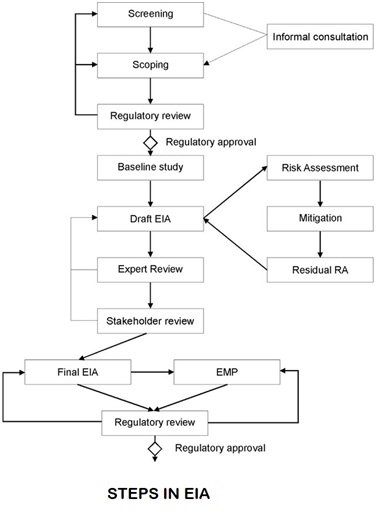Introduction
- The recent floods in Uttarakhand have put the spotlight on the ongoing Rs 12,000-crore Char Dham project -an ambitious plan to improve road connectivity to the Hindu pilgrimage sites of Yamunotri, Gangotri, Kedarnath, and Badrinath.
- The foundation stone of the project was laid in 2016 and was expected to be completed in March 2019.
- However, the deadline for project completion has been extended twice since then, after environmental concerns were raised including issues of road widening.
- The Supreme Court directed that on stretches in Char Dham route where excess hill cutting has been done, the ministry should take mitigation measures like the planting of trees and provisioning of a footpath for padyatris and locals.
- Further, no new hill cutting should be done in all the ongoing/proposed projects until the Environment Impact Assessment report is reviewed by the court-appointed High Powered Committee led by noted environmentalist Ravi Chopra.
Char-Dham Road Project
- The Char-Dham Road Project is a prestigious two-lane expressway scheme being executed in the Himalayan state, Uttarakhand.
- The project proposes widening of roads up to 10 meters to improve the accessibility to Char-Dham (shrines):
- Yamunotri
- Gangotri
- Badrinath
- Kedarnath

|
Understanding the basics of EIA
- UNEP defines Environmental Impact Assessment (EIA) as a tool used to identify the environmental, social, and economic impacts of a project before decision-making. It takes into account inter-related socio-economic, cultural, and human-health impacts, both beneficial and adverse.
- It aims to –
- predict the environmental impacts at an early stage in project planning and design
- find ways and means to reduce adverse impacts; shape projects to suit the local environment
- present the predictions and options to decision-makers
- The EIA process is a method of ensuring that planning decisions are made in the full knowledge of the environmental effects and with full engagement of statutory bodies, local interest groups, and members of the public.
- EIA could prove to be a tool that improves decision-making and ensure that the project under construction is environmentally sound and within limits of the capacity of assimilation and regeneration capacities of the ecosystem.
- Environment Impact Assessment in India is statutorily backed by the Environment Protection Act, 1986 which contains various provisions on EIA methodology and process.

Evolution & History of EIA
- The birth of EIA dates back to the 1970s. In 1969, the USA had brought its first National Environment Policy Act (NEPA) 1969.
- The EIA was initially practiced by developed nations but slowly it was also introduced in developing nations including India.
- Columbia and the Philippines are the earliest examples of developing nations that introduced EIA in their policies. Columbia had brought it in 1974 while the Philippines in 1978.
- Worldwide, EIA is now practiced in more than 100 countries. By the mid-1990s, some 110 countries applied EIA as a major environmental policy.
- In 1989, EIA was adopted as a major development project by the World Bank.
History of EIA in India
- The Indian experience with EIA began over 20 years back. It was started in 1976-77 when the Planning Commission asked the Department of Science and Technology to examine the river-valley projects from an environmental angle.
- Till 1994, environmental clearance from the Central Government was an administrative decision and lacked legislative support.
- On 27 January 1994, the Union Ministry of Environment and Forests, under the Environmental (Protection) Act 1986, promulgated an EIA notification making Environmental Clearance (EC) mandatory for expansion or modernization of any activity or for setting up new projects listed in Schedule 1 of the notification.
- The Ministry of Environment, Forests and Climate Change (MoEFCC) notified new EIA legislation in September 2006.
- The notification makes it mandatory for various projects such as mining, thermal power plants, river valley, infrastructure (road, highway, ports, harbors, and airports), and industries including very small electroplating or foundry units to get environment clearance.
- However, unlike the EIA Notification of 1994, the new legislation has put the onus of clearing projects on the state government depending on the size/capacity of the project.
Environmental Components of EIA
- Air environment
- Quality of ambient air
- Wind speed, direction, humidity, etc
- Quantity of emission likely from the project
- Impact of the emission on the area
- Pollution control desires/air quality standards
- Noise environment
- Levels of noise present and predicted
- Strategies for reducing noise pollution
- Water environment
- Existing ground and surface water resources, their quality, and quantity within the zone
- Impact of the proposed project on water resources
- Biological environment
- Flora and fauna in the impact zone
- Potential damage (likely) due to project, effluents, emissions, and landscaping
- Biological stress (prediction)
- Land environment
- Study of soil characteristics, land use, and drainage pattern, and the likely adverse impact of the project
- Impact on historical monuments and heritage sites
Steps in the EIA Process
- Screening: The project plan is screened for the scale of investment, location, and type of development and if the project needs statutory clearance. Screening is done to determine whether a proposal should be subjected to EIA or not and, if so, at what level of detail. The output of the screening process is often a document called an Initial Environmental Examination or Evaluation (IEE).
- Scoping: The project’s potential impacts, the zone of impacts, mitigation possibilities, and need for monitoring. The environmental tools used in the scoping exercise are - Checklists, Matrices, Networks, and Consultations. Scoping is done to:
- Identify concerns and issues for consideration in an EIA
- Enable those responsible for an EIA study to properly brief the study team on the alternatives and on impacts to be considered at different levels of analysis
- Determine the assessment methods to be used
- Identify all affected interests
- Provide an opportunity for public involvement
- Save time and money
- Establish terms of reference (TOR) for EIA study
- Collection of baseline data: Baseline data is the environmental status of the study area and refers to the collection of background information on the biophysical, social, and economic settings of the proposed project area. Normally, information is obtained from secondary sources, or the acquisition of new information through field samplings, interviews, surveys, and consultations with the public.
- Impact prediction: Positive and negative, reversible and irreversible, and temporary and permanent impacts need to be predicted which presupposes a good understanding of the project by the assessment agency. Considerations in impact prediction are Magnitude, Extent, Duration, and Significance of the Impact.
- Mitigation measures and EIA report: The EIA report should include the actions and steps for preventing, minimizing, or bypassing the impacts or else the level of compensation for probable environmental damage or loss. For each potential adverse impact, the plan for its mitigation at each stage of the project should be documented as it is very important in the selection of the preferred alternative.
- Public hearing: On completion of the EIA report, public and environmental groups living close to the project site may be informed and consulted. Multilateral financial agencies like the World Bank and bi-lateral aid agencies are showing parallel interest in ensuring that the public is involved in the EIA process. These provisions usually guarantee enforcement of utility commitments to public involvement in environmental decision-making. Public participation techniques - press releases, newsletters, polls, surveys, questionnaires, public hearings, workshops, meetings, advisory groups/ task forces, etc.
- Decision making: Impact Assessment Authority along with the experts consult the project-in-charge along with the consultant to take the final decision, keeping in mind EIA and EMP (Environment Management Plan). At each stage of EIA, interim decisions are made. These decisions influence final decisions made about the EIA.
- Monitoring and implementation of environmental management plan: The various phases of implementation of the project are monitored.
- An Environmental Management Plan (EMP) is a detailed plan and schedule of measures necessary to minimize, mitigate, etc. any potential environmental impacts identified by the EIA.
- Once the EIA the significant impacts have been identified, it is necessary to prepare an Environmental Management Plan.
- An EMP should consist of a set of mitigation, monitoring and institutional measures to be taken during the implementation and operation of the proposed project to eliminate the adverse environmental impacts, offset them or reduce them to acceptable levels.
- Assessment of Alternatives, Delineation of Mitigation Measures, and Environmental Impact Assessment Report: For every project, possible alternatives should be identified, and environmental attributes compared. Alternatives should cover both project location and process technologies.
- Once alternatives have been reviewed, a mitigation plan should be drawn up for the selected option and is supplemented with an Environmental Management Plan (EMP) to guide the proponent towards environmental improvements.
- Risk assessment: Inventory analysis and hazard probability and index also form part of EIA procedures.
Stakeholders in the EIA Process
- Project proponent
- EIA Consultant
- Pollution Control Board
- Impact Assessment Agency
- Regional center of MoEFCC
- Public

Environmental Clearance
- Environmental clearance or the ‘go ahead’ signal is granted by the Impact Assessment Agency in the Ministry of Environment and Forests, Government of India. All projects that require clearance from the central government can be broadly categorized into-
- Industries
- Mining
- Thermal power plants
- River valley projects
- Infrastructure and CRZ (Coastal Regulation Zone)
- Nuclear power projects
Salient Features of 2006 Amendments to EIA Notification
- It has decentralized the environmental clearance projects by categorizing the developmental projects into two categories, i.e., Category A (national level appraisal) and Category B (state-level appraisal).
- Category A projects are appraised at the national level by Impact Assessment Agency (IAA) and the Expert Appraisal Committee (EAC) and Category B projects are appraised at the state level.
- State Level Environment Impact Assessment Authority (SEIAA) and State Level Expert Appraisal Committee (SEAC) are constituted to provide clearance to Category B process.
- Category A projects require mandatory environmental clearance and thus they do not undergo the screening process.
- Category B projects undergo a screening process and they are classified into two types.
- Category B1 projects (Mandatorily requires EIA).
- Category B2 projects (Do not require EIA).
Therefore, Category A and B1 projects undergo the complete EIA process, whereas Category B2 projects are excluded from the complete EIA process.
Importance of EIA
- EIA links the environment with development for an environmentally safe and sustainable process of development.
- EIA provides a cost-effective method to eliminate or minimize the adverse impact of developmental projects.
- EIA enables the decision-makers to analyze the effect of developmental activities on the environment well before the developmental project is implemented.
- EIA encourages the adaptation of mitigation strategies in the developmental plan.
- EIA makes sure that the developmental plan is environmentally sound and within the limits of the capacity of assimilation and regeneration of the ecosystem.
Shortcomings of EIA Process
- Exemptions: There are several projects with significant environmental impacts that are exempted from the notification either because they are not listed in schedule I or their investments are less than what is provided for in the notification.
- Inexpert Composition of the committees: It has been found that the team formed for conducting EIA studies is lacking expertise in various fields such as environmentalists, wildlife experts, Anthropologists, and Social Scientists.
- Insignificant Public hearing:
- Public comments are not considered at an early stage, which often leads to conflicts at a later stage of the project clearance. The data collectors do not pay respect to the indigenous knowledge of local people.
- Several projects with significant environmental and social impacts have been excluded from the mandatory public hearing process.
- Quality Issues: One of the biggest concerns that the environmental clearance process is related to is the quality of the EIA report that is being carried out.
- Lack of Credibility: There is a lack of credibility in the EIA studies where erroneous data has been used for report preparation. Further, the same facts have been used for two different places on previous occasions during report preparation.
- Confidentiality: Often the reports and plans for strategic industries such as nuclear energy projects are kept confidential for political and administrative reasons.
- Emergency preparedness plans: They are not discussed insufficient details and the information is not disseminated to the communities.

Draft EIA Notification vs the one in force now
- Removal of various activities from the purview of public consultation:
- A list of projects has been included under Category B2, expressly exempted from the requirement of an EIA
- Examples -offshore and onshore oil, gas, and shale exploration, hydroelectric projects up to 25 MW, irrigation projects between 2,000 and 10,000 hectares of command area, small and medium mineral beneficiation units, MSMEs in the dye industry, etc.
- Coal and non-coal mineral prospecting and solar photovoltaic projects do not need prior environmental clearance or permission in the new scheme.
- Subverts Public Consultation: The notice period for a public hearing has been cut from 30 days to 20 days. This will make it difficult to study the draft EIA report, more so when it is not widely available or provided in the regional language.
- New provision for post-facto environmental clearance: It signifies that the clearances for projects can be awarded even if they have started construction without securing environmental clearances.
- Promotes project modernization and Expansion:The norms in Notification 2020 are liberal, with only those involving more than a 25% increase requiring EIA, and over 50% attracting public consultation.
- Diluted Compliance Mechanism: Project proponents need to submit only one annual report on compliance with conditions, compared to the existing two.
- Apprehensions
- Exemptions will seriously affect the environment,as they would be carried out without oversight
- The move is seen as retrograde, because the deficiency in semi-annual compliance reporting was between 43% and 78%, while failure to comply with conditions ranged from 5% to 57% (CAG report, 2016).
- Industrial Mishaps: After the gas leak at LG Polymers in Visakhapatnam in May 2020, the Environment Ministry told the National Green Tribunal that the unit lacked environment clearance, exposing the low effectiveness of rules.
- Oil India Limited’s oil wells in the Tinsukia district, Assam went up in flames in 2020. It is situated only a few kilometers away from protected forests.
Way forward
- 2020 draft notification
- Instead of reducing the time for public consultation, the ministry should focus on ensuring access to information as well as awareness about the public hearing and its impact upon the whole EIA process.
- To improve ease of doing business, the government should bring down the average delay of 238 days in granting environmental clearance that emanates from bureaucratic delays and complex laws.
- Independent EIA Authority - Sector-wide EIAs needed along with the creation of a centralized baseline data bank.
- Dissemination of information related to projects to the local communities and public.
- Applicability:All those projects where there is the likelihood of a significant alteration of the ecosystem must go through the process of environmental clearance, without exception.
- No industrial developmental activity should be permitted in ecologically sensitive areas.
- Public hearing:It should apply to all hitherto exempt categories of projects which have environmental impacts.
- Focus on conservation: The focus of EIA needs to shift from utilization and exploitation of natural resources to conservation of natural resources.
- Composition of expert committees:The present executive committees should be replaced by expert people from various stakeholder groups, who are reputed in environmental and other relevant fields.
- Monitoring, compliance, and institutional arrangements: The EIA notification should include an automatic withdrawal of clearance if the conditions of clearance are being violatedand it must introduce more stringent punishments for noncompliance.
- Capacity building:NGOs, civil society groups, and local communities need to build their capacities to use the EIA notification towards better decision-making on projects.
Conclusion
Despite these small setbacks, environmental impact assessment has become an integral part of project planning, which is continually being improved for posterity. EIA certainly has a crucial role to play in addressing environmental issues surrounding project development and especially power projects. The integration of the environment into development planning is the most important tool in achieving sustainable development. Environmental protection and economic development must thus be dealt with in an integrated manner.
EIA process is necessary for providing an anticipatory and preventive mechanism for environmental management and protection in any development. Several developing countries are still at the infancy stage of operationalization of their EIA processes. The need for capacity building for quality EIA is also eminent in these countries. Environmental regulation must balance damage to the environment with sustainable development and possible benefits.


